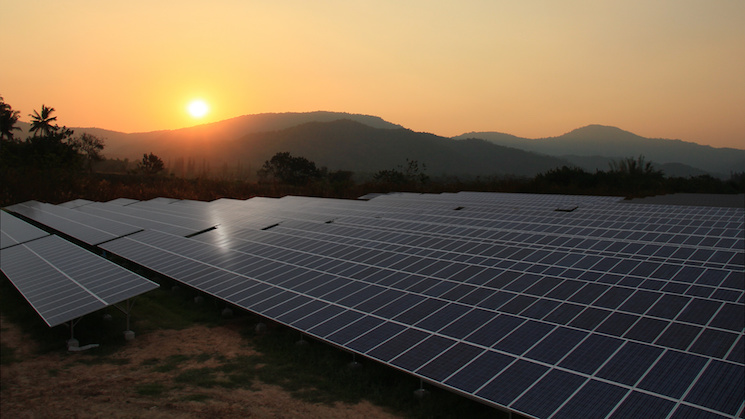October 15, 2013

Sharp claims a world-record PV conversion efficiency of 44.4 percent, confirmed by the Fraunhofer Institute, using a triple-junction concentrator cell with focusing lens and indium-gallium arsenide base layer.
The National Renewable Energy Lab (NREL) announced a world record of 31.1 per- cent conversion efficiency for a two-junction solar cell under one sun of illumination. The previous record of 30.8 percent efficiency was held by Alta Devices. The tandem cell was made
of a gallium indium phosphide cell atop a gallium arsenide cell.
Testing lab TUV SUD confirmed that TSMC Solar’s latest commercial-sized CIGS module, at 1.09 square meter, has achieved 15.7 percent module total area efficiency. The C1 module was produced using the manufacturing equipment and materials at the company’s facility in Taichung, Taiwan, and is available at peak outputs of 140 to 155 watts.
Scientists at the Helmholtz-Zentrum Berlin laboratory and Technical University Delft have demonstrated an artificial photosynthesis device that stores 4.9 percent of incident photon energy in the form of hydrogen. An an- ode of the chemically stable, cheap metal oxide bismuth vanadate (BiVO4) is coated onto a simple silicon thin-film PV cell. The metal oxide is doped with tungsten atoms, setting up electric fields that block recombination of energized electrons. With a cobalt phosphate catalyst, the cell splits water into oxygen and hydrogen. Dr. Roel van de Krol, head of the HZB Institute for Solar Fuels, says the system is theoretically capable of 9 percent efficiency. The work was published July 29 in Nature Communications (nature.com/ncomms/2013/130729/ncomms3195/full/ncomms3195.html).